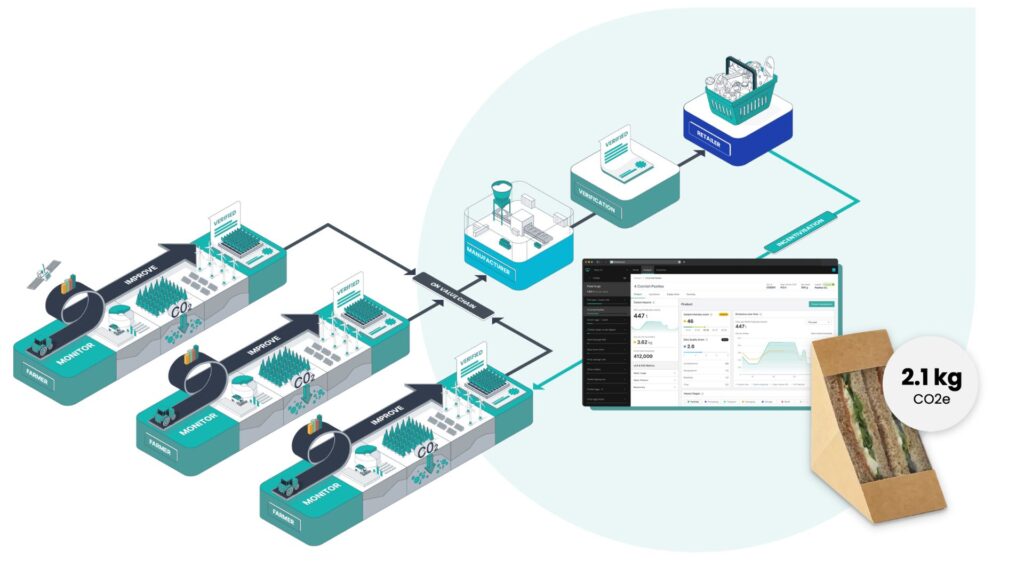In a world overflowing with information, how can businesses start managing their data more intelligently to improve strategy?
How is the business world looking today? With the constantly changing landscape after the COVID-19 pandemic, many companies are having a tough time predicting and planning their finances which is having a big impact on their operations.
There is data overload (2.5 quintillion bytes of data created daily) that makes it difficult to identify relevant insights and develop effective strategies – Lars Hugo Braadland Olsen, director BI and analytics at Arribatec

In addition to this, the pace of change in the corporate landscape is accelerating, driven by new technologies and companies that are not keeping up and are at risk of disappearing. Last, but not least, there is data overload (2.5 quintillion bytes of data created daily) that makes it difficult to identify relevant insights and develop effective strategies based on this data.
Do any of the above scenarios sound familiar? Many businesses are struggling to plan strategically right now but investing in the right tools for your organization will improve your ability to navigate the ever-changing business landscape and achieve long-term success. The concern stressed by many businesses is the paradoxical situation that, most probably, there is an abundance of information available, but it is often difficult to obtain useful, relevant information when it is needed.
An overflowing cup means a messy table
In a world overflowing with information, how can businesses start managing their data more intelligently to improve strategy?
Firstly, companies need to have a strategy ready with real goals. Secondly, they need the action behind these goals and a plan for how the organization will achieve them. Thirdly, a company should try to find a system that can support driving effective strategy through its daily work.
Take the strategic goal to make X amount of money – a business might initially ask how to achieve that goal and split it into action points. Then, it will work to put these actions into operation and measure the results, so it can ask if it’s going in the right direction. In theory, this sounds simple enough. But without the right system to support the process, you can quickly be lost in an overflow of information, especially when you consider implementing and monitoring numerous processes throughout an entire organization.
Pouring resources into business intelligence (BI) technology can seem like the first step, and the past few years have seen an influx of investment in BI tools that help organizations digest all that overflowing data. But it is not all about buying a BI system, as often left behind is that much-needed planning for a better strategy.
Most organizations have a concept in mind for reaching their goals, but what tends to be missing is the action of turning that plan into operations because of the challenge and time it takes to make everything work cohesively and communicate effectively – and for that, there are two different ways of doing it.
The first option will be strategic planning or corporate performance management (CPM), a software application used by businesses to help manage and measure their performance against strategic goals and objectives, typically providing a suite of integrated applications designed to support various aspects of performance management, including: budgeting and forecasting, financial consolidation, financial reporting, strategic planning, score carding and analytics. The second option will be using financial planning and analysis (FP&A), a software application designed to support the financial planning, budgeting, forecasting and analysis processes within an organization.
BI systems represent only the reporting element, while CPM and FP&A tools are more about the feedback we receive from the software and arguably, as collaboration tools, the better way of understanding the data. Often, other traditional reporting tools fail to properly support the input of data or workflows. A fully operational and functional plan will see constant communication and effective collaboration between people and the software – including workflows. Here’s where we have seen systems like Hypergene and other CPM systems helping customers along the way.
The next step up: XP&A for data strategy building
Looking ahead, businesses today are seeking a more holistic approach when it comes to financial planning and analysis for their organizations to build better and more effective strategies. Increasingly, they are landing on extended planning and analysis (XP&A) tools.
XP&A combines financial and non-financial data to provide a more comprehensive view of a business’ performance and enable better decision-making. This includes data from various sources, such as customer feedback, market trends and operational data, in addition to financial data.
The goal of XP&A is to provide decision-makers with a more complete picture of a business’ performance and help them identify new opportunities and potential risks. This is done by integrating data from across the organization and applying advanced analytics techniques, such as predictive modeling and machine learning, to uncover insights and trends that might not be apparent from financial data alone. XP&A also emphasizes collaboration and communication across different functions of the organization, enabling more effective decision-making and alignment of business goals.
Overall, XP&A is a more comprehensive and strategic approach to financial planning and analysis that can help businesses make more informed decisions and stay ahead of the competition.
Software still needs a human in the communication loop
Lately, technology has been advancing very fast, but it still needs a human component to it to make it work. Taking the example of the popular tool ChatGPT, we see that not all the generated responses are correct as it has been trained on a vast amount of data and can generate responses that are contextually relevant and grammatically correct, but there is no guarantee that it will always provide the right answer to every question.
If we extrapolate this example to XP&A, it uses AI and machine learning techniques to provide data that can support or help companies better predict their goals. But, there is always the need for a manager to go over that data and hit OK – a human element that reviews and checks all the answers to the questions.
Managing data intelligently is about collecting the right data, storing and organizing it effectively, analyzing it to gain insights and using those insights to inform better business decisions. With collaboration between departments and tools, businesses can establish data management procedures and use their data analytics tools to provide valuable insights that will inform an organization’s strategies. By continuously monitoring the strategy together with the new data, companies will stay agile and responsive to the changes in the market, managing data intelligently and using it to inform their strategies for better outcomes.




